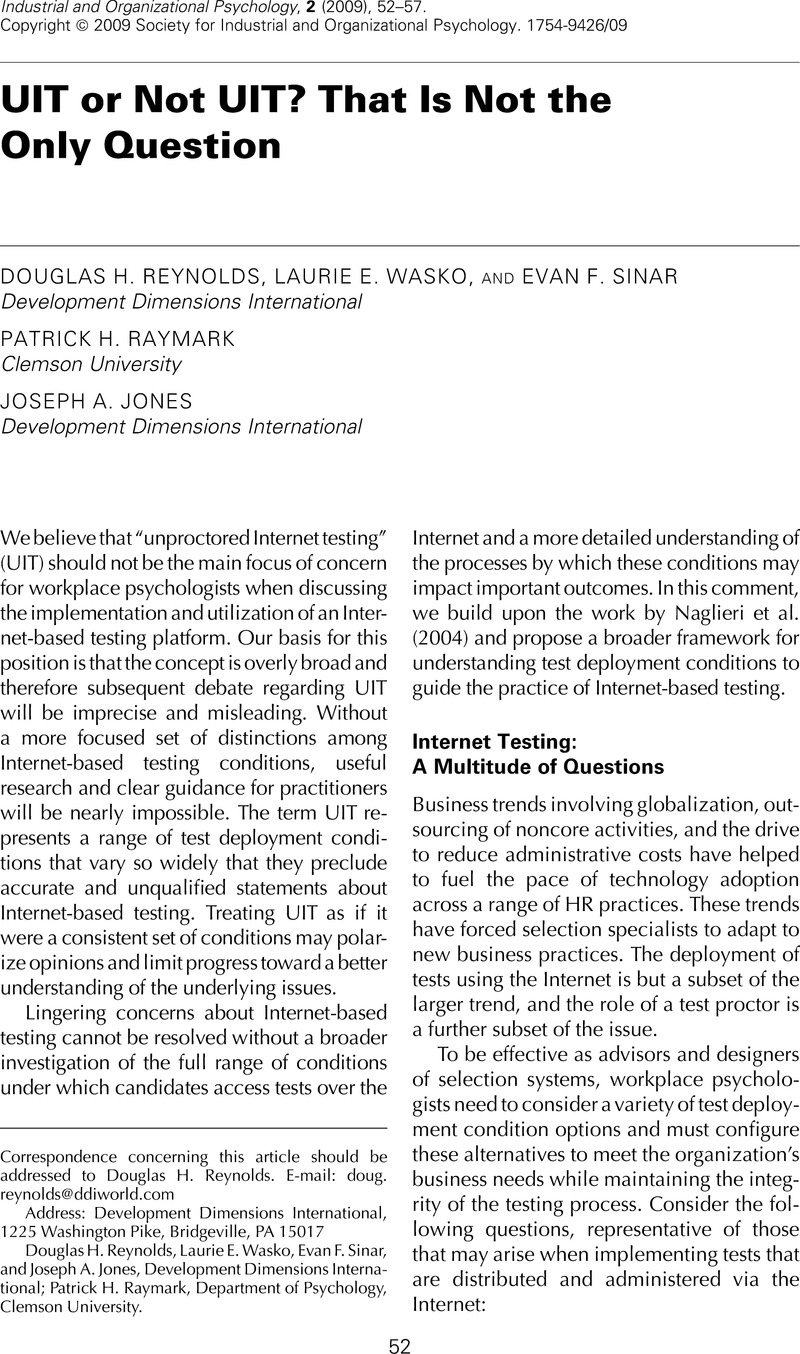Crossref Citations
This article has been cited by the following publications. This list is generated based on data provided by Crossref.
Tippins, Nancy T.
2009.
Where Is the Unproctored Internet Testing Train Headed Now?.
Industrial and Organizational Psychology,
Vol. 2,
Issue. 1,
p.
69.
Scott, John C.
and
Lezotte, Daniel V.
2012.
The Oxford Handbook of Personnel Assessment and Selection.
p.
485.
King, Danielle D.
Ryan, Ann Marie
Kantrowitz, Tracy
Grelle, Darrin
and
Dainis, Amanda
2015.
Mobile Internet Testing: An analysis of equivalence, individual differences, and reactions.
International Journal of Selection and Assessment,
Vol. 23,
Issue. 4,
p.
382.
Langenfeld, Thomas
2020.
Internet‐Based Proctored Assessment: Security and Fairness Issues.
Educational Measurement: Issues and Practice,
Vol. 39,
Issue. 3,
p.
24.
Steger, Diana
Schroeders, Ulrich
and
Gnambs, Timo
2020.
A Meta-Analysis of Test Scores in Proctored and Unproctored Ability Assessments.
European Journal of Psychological Assessment,
Vol. 36,
Issue. 1,
p.
174.
LaFlair, Geoffrey T.
Langenfeld, Thomas
Baig, Basim
Horie, André Kenji
Attali, Yigal
and
von Davier, Alina A.
2022.
Digital‐first assessments: A security framework.
Journal of Computer Assisted Learning,
Vol. 38,
Issue. 4,
p.
1077.



